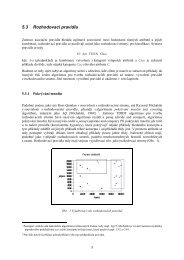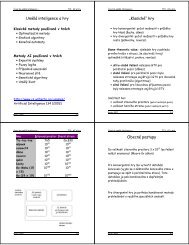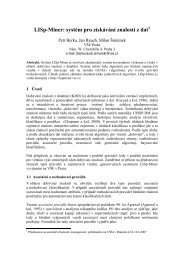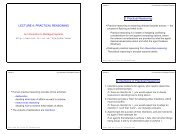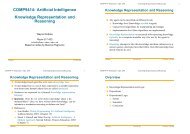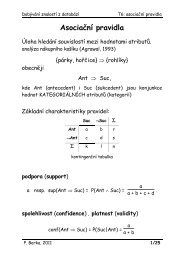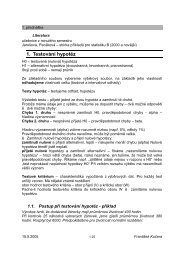Review of Probability Theory - Sorry
Review of Probability Theory - Sorry
Review of Probability Theory - Sorry
You also want an ePaper? Increase the reach of your titles
YUMPU automatically turns print PDFs into web optimized ePapers that Google loves.
To justify this procedure, let us calculate the probability <strong>of</strong> error whenever we make a<br />
decision. Whenever we observe a particular x,<br />
Clearly, in every instance in which we observe the same value for x, we can minimize the<br />
probability error by deciding:<br />
• if , and<br />
• if .<br />
Of course, we may never observe exactly the same value <strong>of</strong> x twice. Will this rule minimize<br />
the average probability <strong>of</strong> error? Yes, because the average probability <strong>of</strong> error is given by:<br />
and if for every x, P(error/ x) is as small as possible, the integral must be as small as possible.<br />
Thus, we have justified the following Bayes‘ decision rule for minimizing the probability <strong>of</strong><br />
error:<br />
This form <strong>of</strong> the decision rule emphasizes the role <strong>of</strong> the a posteriori probabilities. By using<br />
equation 3, we can express the rule in terms <strong>of</strong> conditional and a priori probabilities.<br />
Note that p(x) in equation 3 is unimportant as far as making a decision is concerned. It is<br />
basically just a scale factor that assures us that<br />
By eliminating this scale factor, we obtain the following completely equivalent decision rule:<br />
.



